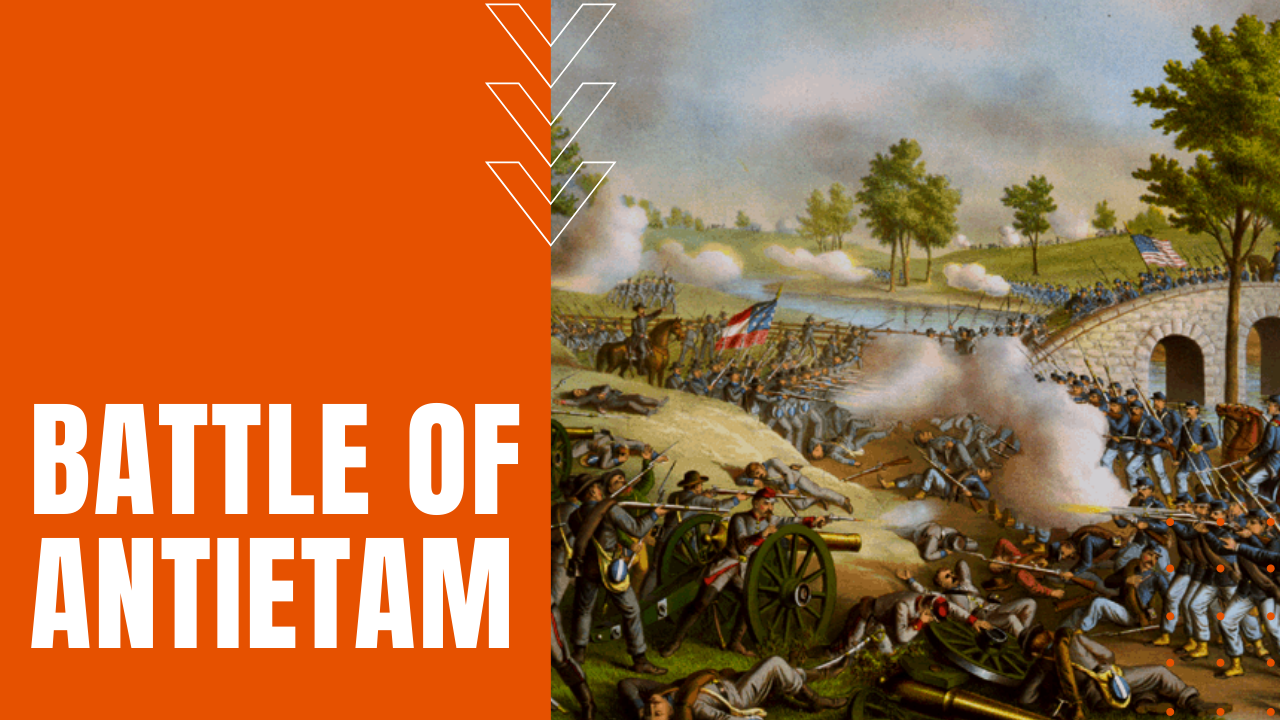Battle of Antietam: Deadliest Day in American Military History

The battle of Antietam, or the Battle of Sharpsburg as it was known in Confederate circles, was the first field army-level engagement in the Eastern Theater of the American Civil War. Fought in a single day near Sharpsburg, Maryland, along the banks of the Antietam River, on September 17th, 1862, Confederate General Robert E. Lee’s Army of Northern Virginia would see an abrupt end to his Maryland Campaign aspirations to invade and subdue the northern states of the badly-divided nation.
The Battle of Antietam
After pursuing Lee’s forces into Maryland, Maj. Gen. George B. McClellan of the Union Army launched attacks against Lee’s forces in what would become the bloodiest day in Civil War history. The fighting would devolve into four phases, with the first engagements starting early in the morning. It began when the Union’s First Corps led by Maj. Gen. Joseph Hooker and the Union’s 12th Corps saw 20,000 Union soldiers sweep through and around a cornfield, while Stonewall Jackson’s men pushed back with artillery and infantry offensives.
Confederate re-enforcements bolstered the confrontation, allowing Jackson and his men to hold the line. The second phase began when the Union’s 2nd Corps arrived, splitting into two lines to fight in and around what would soon become known as Bloody Lane, while the rest went to the West Woods and met with disaster behind a Dunker Church at the hands of a powerful Confederate counter-offensive. When Union war leaders determined that Confederate strength was weakest around Bloody Lane, they sent in re-enforcements to flank the faltering Confederate line, forcing the Rebels to fall back in a panicked and disorganized retreat.
Meanwhile, the Union’s 9th Corps struggled under Maj. Gen. Ambrose Burnside’s objective of capturing or circumventing what is now known as Burnside Bridge. Ultimately, Burnside’s men succeeded at noon after several failed and bloody attempts earlier in the morning. As a result of his successes, at one in the afternoon, Union troops stormed the Burnside Bridge, creating a mounting and quite disastrous potential for a Confederate defeat. As disaster loomed ever closer, Confederate troops led by Maj. Gen. A.P. Hill arrived from Harper’s Ferry, exactly when and where they would needed most in support of Lee’s faltering line.
Who Won the Battle of Antietam: Casualties and Significance
The Union advance stalled under the added pressure, bringing an end to the bloodiest single day in all of American history. By day’s end, nearly 23,000 soldiers would be killed, wounded, captured or missing. The following day, both sides were too worn down and demoralized to launch another attack, but the Battle of Antietam marked the end of the South’s attempted offensive into the northern United States. Repelled by superior Union forces—87,000 Union soldiers against 38,000 Confederates—the battle proved to be decisive enough for Abraham Lincoln to take the bold step of issuing his preliminary Emancipation Proclamation, which shifted the war’s emphasis from preserving the nation as a whole to freeing the slaves of the agrarian South.
